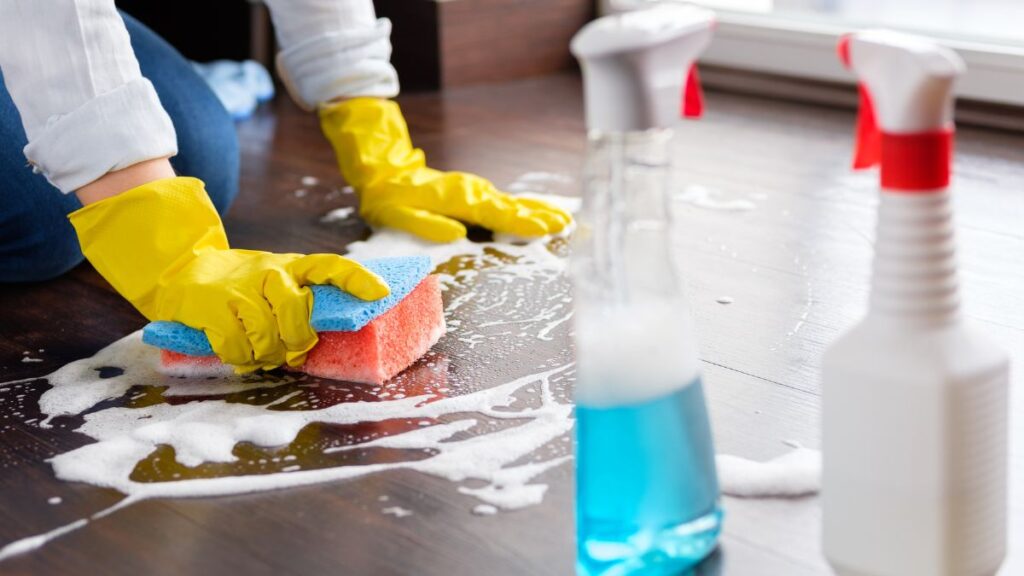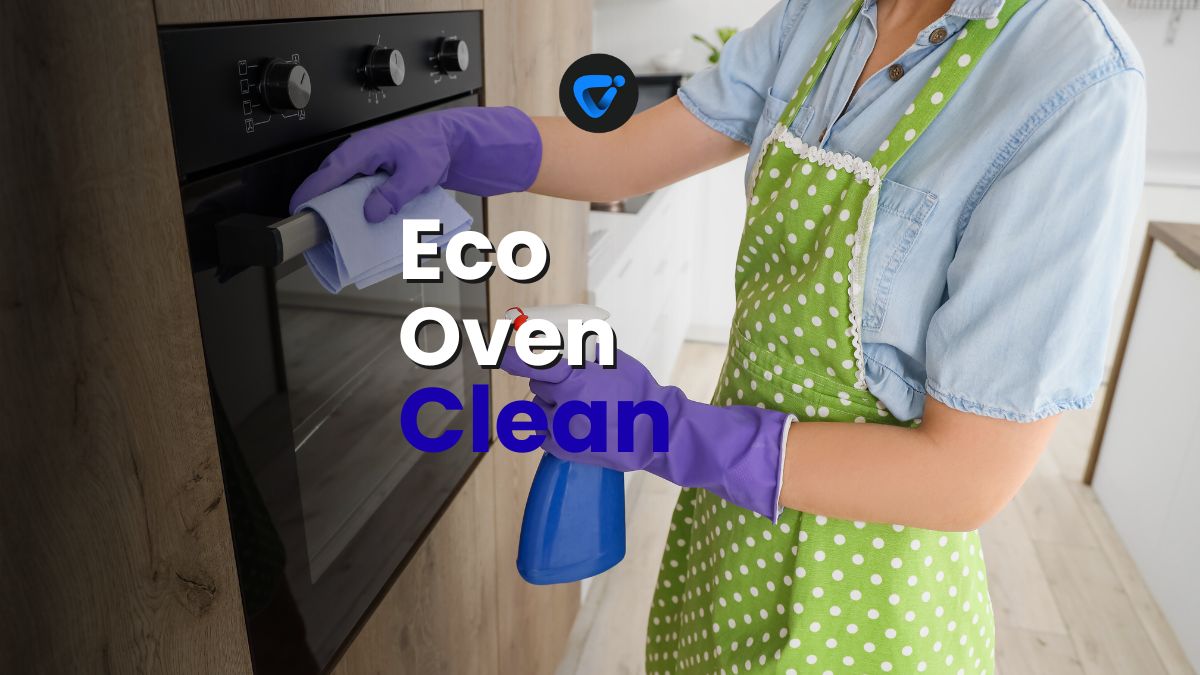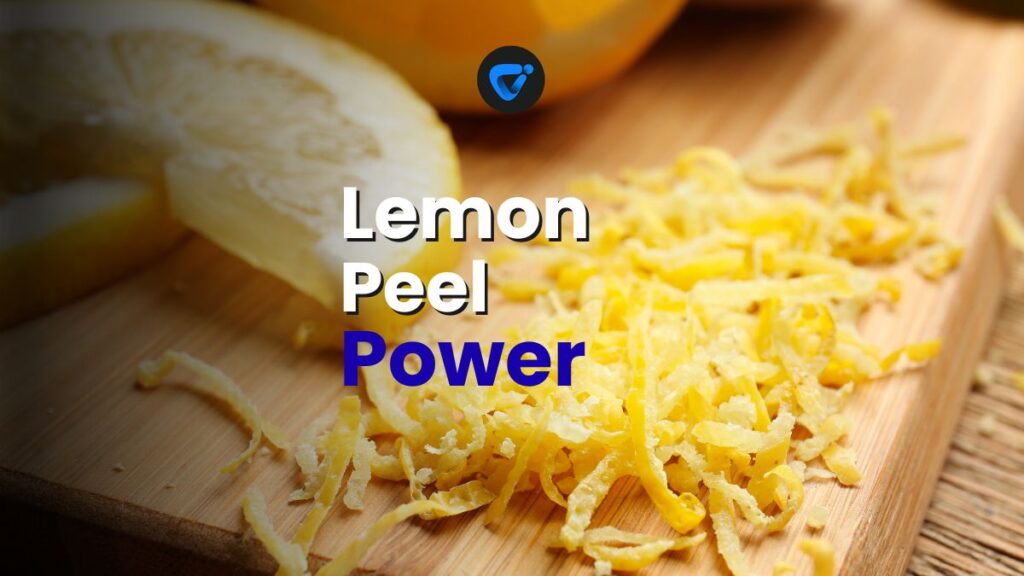
You grab a sponge, fill the bucket, and get ready to scrub—but midway through, you wonder if there’s a better way to reduce water waste while cleaning. Taking small steps helps conserve resources while keeping your home fresh. This article shows you practical, doable swaps to cut down water waste without losing cleaning power.

Lemon Peels: The Hidden Powerhouse
Don’t toss those peels! Discover how lemon power can naturally clean, deodorize, and shine every corner of your home.
Every home cleaning task, from dishes to floors, uses precious water. If not managed, the gallons add up each week. Yet, it only takes a few simple adjustments to make your routine much more water-wise. Each choice can shrink your footprint while keeping your space inviting.
Stick with this guide for green tips tailored for real homes. You’ll see exactly what to try, scripts for family helpers, and the best times to swap old habits for new ones. Whether you’re cleaning up after dinner or deep-cleaning the kitchen, these micro-guides fit smoothly into your existing routine.
Switch to Tools that Limit Excess Water
Changing your tools makes it easier to reduce water waste while cleaning. The best gear stops water from being wasted before it even hits the floor or surface.
Look for products and habits that control flow or capture more grime per rinse. These specific changes will quickly add up over a few weeks, letting you see progress.
Choose Microfiber Cloths for Maximum Absorption
Microfiber cloths grab dust and grime better than standard rags. Dragging them across counters, you’ll notice less need to rinse or re-wet your cloth. “It feels slick and grabs everything,” a parent told me after swapping out her stack of old towels.
This means each cleaning session uses a single bowl of rinse water instead of multiple sink fills. The dense weave traps particles, leaving surfaces streak-free with a single swipe.
After cleaning, toss microfiber cloths directly into the wash. They’re reusable for years—no disposables required. This switch can reduce water waste dramatically with every wipe-down.
Adopt Squeeze Bottles and Foaming Dispensers
A squeeze bottle for cleaning spray delivers targeted cleaner, so you never flood the surface. With a single squeeze, you apply just enough solution for the job.
Foaming dispensers mix air into liquid, spreading cleansers over larger areas with smaller amounts. When you wash bathroom surfaces or kitchen counters, you only need a few pumps to finish.
This method prevents “splash-and-wipe” waste. You’ll spend less time at the sink and more time getting each room sparkling, saving both water and effort every session.
| Tool | Water Use (per session) | Effectiveness | Takeaway |
|---|---|---|---|
| Conventional Rag | 3 bowls | Basic | Switch to microfiber to cut rinse water by half |
| Microfiber Cloth | 1 bowl | High | Use for best results and lowest water waste |
| Sponge Mop | 2 buckets | Good | Limit mop rinses–try spray mops instead |
| Spray Mop | Less than 1 bucket | Very High | Switch for big water savings on floors |
| Foaming Dispenser | 1/3 cup | High | Use to get more clean with less liquid |
Plan Your Cleaning Routine to Minimize Water Use
Organizing your cleaning in a set sequence is key to reduce water waste. Tackling jobs from least to most dirty keeps rinse water cleaner for longer and reduces repeats.
Think about moving from dry dusting to wet wiping. This approach means every drop used is doing important work, rather than being poured down the drain unnecessarily.
Make a Cleaning Path that Reduces Double Work
Start in less-trafficked areas and finish in messier spots. A good script sounds like: “I’ll wipe the windows, then the counters, then mop the floor—using only one water bucket.”
- Begin with dusting to remove loose debris, preventing gunk from soiling clean water down the line.
- Wipe all sides of the room from top to bottom so drips don’t force you to redo clean surfaces.
- Wet-clean flat surfaces last—with fresh water—to avoid tracking dirt back onto clean spots.
- Reuse rinse water for items like doormats that don’t require sparkling results, maximizing every bit.
- Reserve a final, tiny bowl for any delicate items that need perfectly clean water, so you never overfill the sink needlessly.
This sequence means you only swap out water when it’s truly dirty. In a week, this can reduce water waste noticeably across your household chores.
Use “Dry-to-Wet” Workflow in Each Room
- Dust with dry tools first—saves water needed for actual wet scrubbing since you’ve already lifted dirt off.
- Spot clean sticky patches with a damp cloth only where needed, skipping unused areas for further savings.
- Rinsing tools just once between focused tasks saves extra trips to the tap. One bucket suffices for multiple chores when following this order.
- Teach helpers your flow: “Wipe shelves before wet-mopping,” so family teamwork cuts down accidental water waste.
- Keep a checklist hung on a broom closet door for easy reference; this builds the habit of reducing water waste through routine rather than effort.
Combined, these strategies create a fluid, low-waste cleaning loop for every home space.
Batch and Reuse Water for Efficient Cleaning Cycles
Reusing rinse water is a straightforward way to reduce water waste while cleaning. Instead of discarding water after each task, group related jobs and collect water for multiple uses.
This approach applies to dishes, surfaces, or even laundry. One bucket can handle several cleaning jobs if planned well, streamlining chores while protecting precious water.
Save Rinse Water for Tougher Jobs Down the List
Collect used water from tackling lighter jobs first, then deploy it for the dirtier tasks later. For example, after wiping countertops, save that rinse water to pre-soak muddy floors.
Scripts like: “Countertops done—pour this bowl into the mop bucket now” help build a habit. It’s a direct path to reduce water waste in real time with no extra steps.
This cycle also works with dishwater—wash cleaner glassware first, leave slots for pots and pans at the end, and reuse the final water for soaking greasy utensils.
Batch Clean to Stretch Every Drop
Set biggest jobs together and do them in one go so you fill the bucket just once. Example: “Let’s wipe all windows today, then reuse the same water for patio chairs.”
This means you only need to fetch clean water for delicate final rinses. Clothes handwashing can follow a similar rule—light items, then darks or heavily stained last using water from the previous batch.
Be conscious of timing: Get everyone—kids and partners—working on the same batch-cleaning session. The teamwork approach gets more done and slashes waste without fuss.
Time Your Cleaning for Water Efficiency Gains
Choosing when to clean can also help reduce water waste while cleaning. Timing your chores for cooler parts of the day or lower-traffic hours stops water from evaporating quickly and lets you work more efficiently.
For example, washing windows in the evening or early morning prevents cleaning solution from drying too fast, so you skip repeated rinses—a clear water-saving win.
Nighttime and Morning for Hard Surfaces
Cooler air at these times allows water to linger just long enough for proper cleaning, reducing the need for extra rinses or splashes. “I always get streak-free glass if I clean after dinner,” says my neighbor.
Plan to do bathrooms during off-peak hours. Less traffic after bedtime means surfaces stay cleaner longer and water flows only for the actual clean, not repeated freshen-ups.
This habit also helps you build a calm, quiet routine that becomes almost meditative—a bonus for stress and waste at once.
Kitchen Chores Fit Gaps in Family Schedules
After everyone finishes breakfast, wipe kitchen counters immediately. Spills and crumbs haven’t hardened yet, so a quick swish with a small bowl of water is all it takes.
Evening dishwashing means soaking baked-on dishes while finishing a family activity. Things come off with less scrubbing, and you refill the sink less often. This is a simple way to reduce water waste in family life.
Think of this approach as using a “watering schedule” for your home. By matching cleaning times to family routines, you strike the right balance between efficiency and resourcefulness every day.
Choose Eco-Friendly Products to Lower Water Needed for Rinsing
Selecting the right products can help reduce water waste while cleaning by making it easier to rinse surfaces or fabrics completely. Eco-friendly cleaners usually require less water because they don’t leave sticky residues behind.
Switch from conventional soaps that lather heavily to low-sudsing, plant-based solutions. They clean just as well with less rinsing, as there’s less foam to wash away.
Look for Non-Toxic, Low-Residue Cleaners
Products labeled as “biodegradable” or “low-residue” usually deliver the desired result with a single rinse, saving several gallons every session. Choose options with clear instructions, like “use a capful per quart of water” to limit waste.
Liquid Castile soap, vinegar mixes, and homemade solutions all reduce clingy film, meaning scrubbing and rinsing time drops dramatically. You’ll notice surfaces are easier to wipe dry, too—less water, faster results.
Tip: Load up a spray bottle with a 1:3 solution of vinegar, lemon, and water for kitchens. After cleaning, a quick swipe with a microfiber cloth leaves everything shiny—no extra water needed.
Spot-Clean and Target Problem Areas First
Spot-cleaning can reduce water waste while cleaning, because you treat only the places that need it most. Dabbing a stubborn mark with a damp cloth reduces the urge to wash an entire area unnecessarily.
This saves both water and elbow grease. By breaking the habit of “full-coverage” washing, households quickly see tangible reductions in water and product use, without any drop in clean quality.
Tackle High-Traffic Spots, Avoid Whole-Room Washes
Identify footprints, food splatters, or handprints as soon as you see them. Removing these right away stops grime from spreading—and stops you from needing to deep-clean later.
A basic kit—a small spray bottle, a few cloths, and spot cleaner—means you’re ready to address sudden messes with only a touch of water. Family members can say: “There’s jam on the fridge handle; I’ll grab the kit and fix it in two minutes.”
The result is less standing water, less wasted rinse liquid, and more effective daily cleaning—all of which add up to a noticeable reduction in water waste.
Cleaning Forward: Every Drop Counts
To reduce water waste while cleaning, it’s best to rethink each step—from tool choice to routines and timing. Each change not only boosts efficiency but also creates lasting smart habits at home.
The benefits reach beyond your bill or budget. They show our resourcefulness and responsibility. All these tweaks protect valuable water while making your cleaning routine smoother for everyone involved.
It starts with one small switch or checklist. Take action today—notice how much more you can do to reduce water waste while cleaning. Your home, wallet, and the environment will thank you in the months to come.
Frequently Asked Questions
Use a spray mop with a refillable tank. Mist lightly as you clean, using microfiber pads that pick up dirt in one go, limiting the need for multiple buckets.
Yes. After mopping kitchens or bathrooms, pour the leftover water onto outdoor mats or dirty porch steps to stretch every drop. Just don’t reuse water for delicate items.
Create visual charts in the cleaning area outlining routines, checklists, and specific scripts like “wipe, then rinse only when truly needed.” Make it a fun team effort for kids and adults alike.
Usually, yes. Low-residue, plant-based cleaners rinse away quickly, meaning fewer wash cycles to get surfaces clean, which directly cuts down on water use.
Keep a small bowl or spray bottle nearby to spot-clean messes right after they happen. This approach targets the issue and skips unnecessary wider washes, saving water every time.

Eco-Friendly Oven Cleaning Without Harsh Fumes
Clean smarter, not harsher! Try our eco-friendly oven cleaning guide for a spotless shine—no toxic fumes needed.


